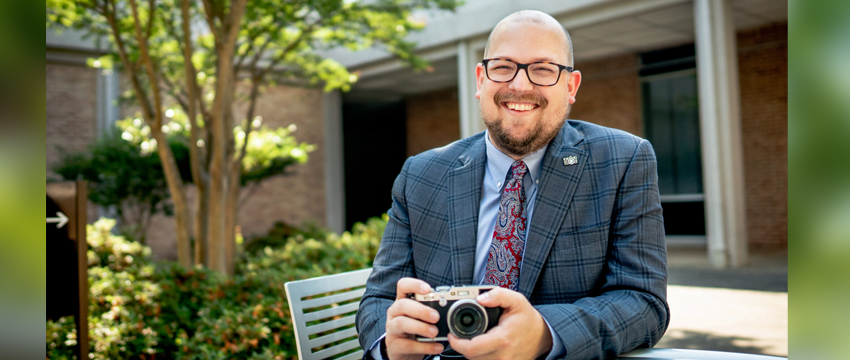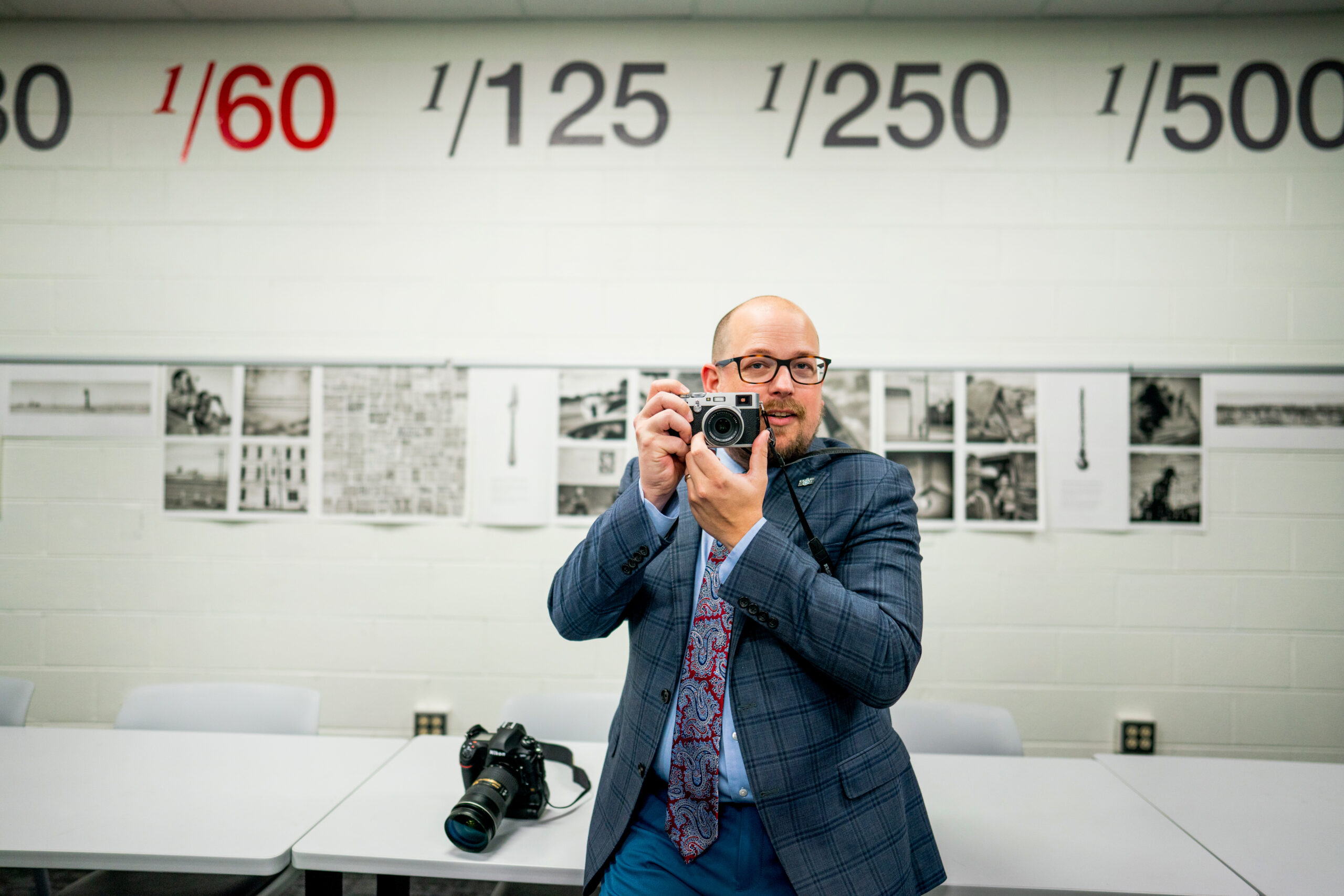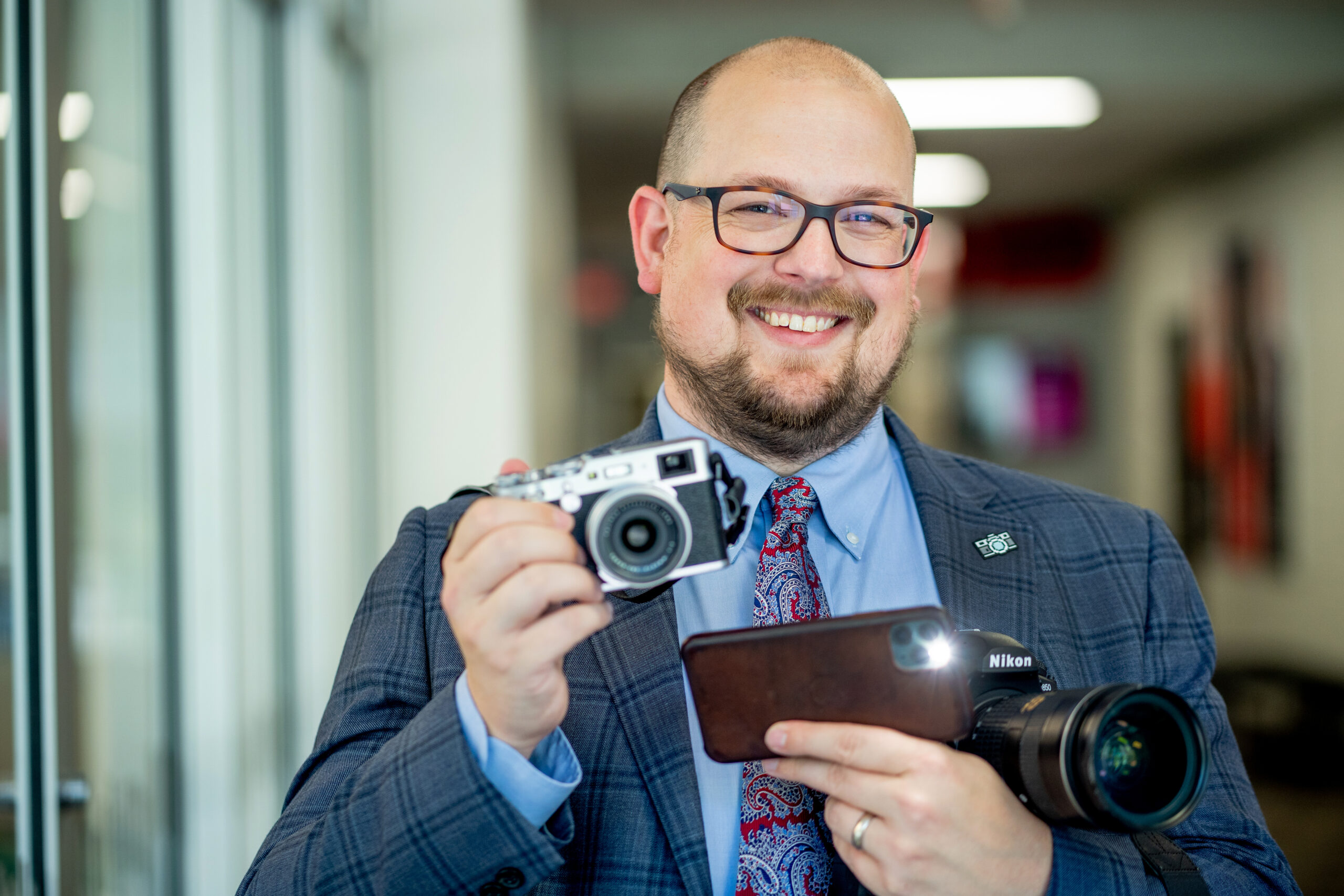The camera eats first: Q&A with Kyser Lough

The camera eats first: Q&A with Kyser Lough
Assistant Professor Kyser Lough teaches in the Grady College of Journalism and Mass Communications’ photojournalism program and studies visual communication, with an emphasis on photojournalism, as well as solutions journalism. In this interview, Lough discusses the continuing role of photojournalists in an age of ubiquitous imagery, and how he teaches his students to navigate that landscape. Read more about his research here.
How do you describe photojournalism research?
You can think of it several different ways, and the first is looking at the images themselves: What are the images telling us? How are they chosen? What’s being left out? Who is in the image? What kind of effects do these images have on people? That’s a big question surrounding conflict photography especially—we need these photos to see what’s going on, but what kind of toll is it taking on us to constantly see images of conflict?
What we often forget about is there’s a person behind the camera making these pictures, and that person has to physically be there. During the pandemic a lot of reporters were stuck at home; they were calling their sources and having Zoom meetings. The photographers had to go to these places to make these photos. So there are a lot of questions surrounding access and embodiment when it comes to being a photojournalist—how they have to use their bodies in the act of photography, not just to maneuver to make photos but also in negotiating for access to where they need to be.
It’s also fascinating to dig into photographers’ minds and ask about their process. How do they look for things to photograph? How do they decide what, who and when to photograph? When you combine that with talking about access and embodiment, it gives us a deeper look into the images.
As a visual communicator, what your thoughts about how the media world we live in has changed over the last two or three decades?
It’s definitely changed how we think of images. We toggle back and forth between seeing images as pure, unadulterated reality or pure, unadulterated fiction. It’s something we have to consider when we think about modern-day news literacy. In being worried about misinformation and disinformation, we need to really look at images. Part of that is putting the focus back on the image creator and the image owner. Just like we try and vet news sources, we also need to vet image sources and understand that many different things could have happened between an image being captured and us seeing it.
With deep fake video technology and ever more sophisticated photo-editing software, how are we going to determine the truth of an image in the future?
There is fascinating work being done on this right now. Part of it is news literacy and training us to have a healthy dose of skepticism when consuming news. But on the other end, there are computer scientists developing algorithms to analyze and detect alteration in images and video.
From the professional side, there are organizations and people working to prevent it on the creation end. So instead of trying to detect a fake image, it’s about providing a certificate of authenticity: “This image is real.” The Content Authenticity Initiative is probably the biggest one right now, where they are working with Adobe and other folks to essentially create a uneditable chain of edits and history on a photo. You can see the date and time the image was taken, but also see that it was loaded into Photoshop and these different edits were made. If that’s widely adopted—and the problem is it has to be adopted—then we can use that to vet images before they are out there and manipulated.

On a more positive note, all this changing technology and media affords a lot more possibilities to photojournalists in how they create and publish and share their work. What do you teach your students about how to leverage that to their advantage?
We start with the core foundation that storytelling matters, first and foremost. It has to be a good story. It has to be a good moment. We have to be people-focused. We start there, and then we can think about the platforms we use to tell this story. It’s so easy to get lost in the shiny new thing and forget we have to start as good journalists and good storytellers.
Now that everyone has a camera in their pocket, do we still need photojournalists?
That’s such a great question. In 2009, an airplane landed in the Hudson River in New York, and one of the first images to spread from that was not taken by a photojournalist—it was taken by a man on a ferry with a cell phone. He uploaded it to Twitter, and within minutes it was all over the place. Of course, now that’s commonplace. We know when something’s happening, and we’re not just seeing pictures posted—we’re seeing people livestreaming from their phones.
It’s very important for society to have that ability, for us to be able to witness and surveil as private citizens. On the other side of it, however, I firmly believe it’s still important to have photojournalists and trained storytellers out there because of the ethics and sensitivity surrounding a lot of the stories we’re trying to tell.
Journalism should be independent. There should be no conflict of interest; the journalist covering the story should not be involved in the story. The journalist’s images, while not being completely objective, are still representative of an independent observer who has been trained in how to be fair and how to cover the story and how to skillfully use the equipment. We still need journalists to tell these stories and uncover instances where power is being abused, and especially to protect the vulnerable.
Are your students more sophisticated about visual communications, having grown up with Instagram and Twitter and all of these new media?
I like to think so. It’s hard to think back to a time when we didn’t have a camera in our pocket, although it hasn’t been that long when you think about it. The biggest shift has been in the visual literacy students have in how the cell phone camera has allowed them to regularly observe and document their daily life. Once on a study abroad program we sat down to dinner, and the students brought out their phones and took pictures of the food. The phrase they taught me was: “Phone eats first.” And I love it. There’s no shame in it. I mean, when else in history has it been this easy to just snag a picture of anything and then go back and use the photo as a memory device?

What’s the best photo you’ve ever taken?
Recently I haven’t been able to do as much photography as I have in the past, because my priorities are research and teaching. But we take our students out into the world as much as possible to get experiential learning, so I like to try and turn the camera around on them and those have been my favorite recent photos—the pictures of my students photographing. I’ve really enjoyed documenting the process as they grab their cameras and go out and do things. When I’ve taught study abroad, I took pictures of them photographing, and at the end of the program I wrote them a note and gave each one pictures of them out making photos.
The other answer to that question would be the times that I haven’t taken a picture. This is something that I usually wrap my photo classes with, this idea that just because we can doesn’t mean we should, especially in the day and age when we all have a camera in our pocket. I challenge my students to think about when to take a picture and when to simply use your five senses to really sit in that moment. Not everything has to be photographed.
The above feature was originally written and posted by UGA Research, and can also be round on the UGA Research website.